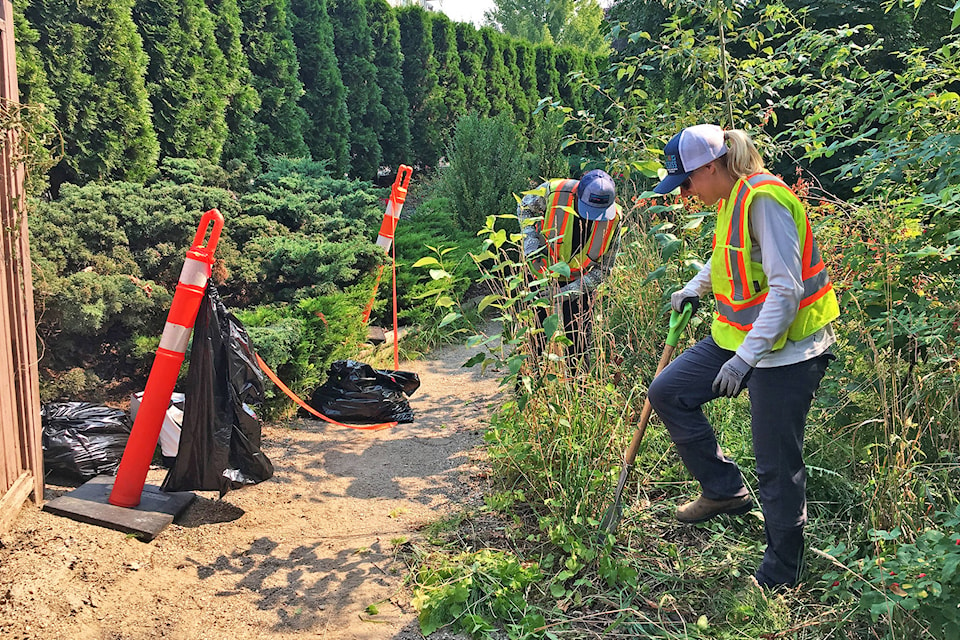The signs are still up, but the wild parsnip has been removed from the Turner Creek Trail between 20th and 24th Street NE.
Columbia Shuswap Invasive Species Society Field Operations Program Co-ordinator Laura Gaster and summer student Sam Legebokow were on the trail on Aug. 8, digging up the toxic weed that can pose a serious threat to humans and animals and grew in the same place last year.
City of Salmon Arm’s Rob Gerow, who will take over as manager of roads and parks in September, says the signs warning of the weed and its potential for harm will remain in place until he has been assured the wild parsnip has been removed.
The invasive wild parsnip looks like a dill plant or Queen Anne’s lace, with yellow flowers. It grows about four feet tall and can cause dermatitis if a person handles the fruit, flowers or leaves. Severe cases can cause blistering and extreme burning sensations.
As the open wounds can become infected, anyone who has contact with the plant should shower immediately and stay inside out of the sunlight.
Related: Poison lurks beneath the petals of some Shuswap plants
Another toxic weed to be avoided is poison hemlock, which is so prolific in area parks, fields, ditches, parking lots and more throughout the Shuswap eradicating it would be impossible.
Often confused with Queen Anne’s lace, poison hemlock grows to be six-10 feet tall with white flower heads.
Ingesting the seeds can result in dilation of the pupils, dizziness and trembling, slowing heartbeat, paralysis of the central nervous system, muscle paralysis and death due to respiratory failure.
Poison hemlock stems are hairless with dark purple spots, while Queen Anne’s lace has hairy stems and no purple.
The flowers on both plants are white and bloom in an umbrella-shaped pattern, but Queen Anne’s lace flowers are flat on top and usually have a single purplish/red flower at the center. Poison hemlock flowers are more rounded, with no colourful flower.
While both have leaves that are fern-like, Queen Anne’s lace’s leaves will have hairs on the undersides. The leaves of poison hemlock are not hairy.
Related: Help stop the spread of invasive species in the Okanagan-Shuswap
Another weed the Columbia Shuswap Invasive Species Society is monitoring in Salmon Arm is the invasive knotweed.
Knotweeds thrive in roadside ditches, low-lying areas, irrigation canals, and other water drainage systems. They are also found in riparian areas, along stream banks, and in other areas with high soil moisture.
Knotweeds threaten biodiversity and disrupt the food chain by reducing available habitat and increasing soil erosion potential. Stream banks are at particular risk as exposed knotweed roots break off and float downstream to form new infestations. Knotweeds can reduce or eliminate access to water bodies for recreation activities including fishing, swimming, boating, canoeing, and kayaking.
Gerow says there are a number of signs indicating where knotweed is being monitored, including one at the corner of 20th Avenue and 20th Street NE. Anyone who sees invasive species growing is asked to call Gerow at the City of Salmon Arm at 250-803-4000.
“The more eyes out there the better,” he says.
For more information on invasive species, go to https://columbiashuswapinvasives.org.
@SalmonArm
barbbrouwer@saobserver.net
Like us on Facebook and follow us on Twitter
